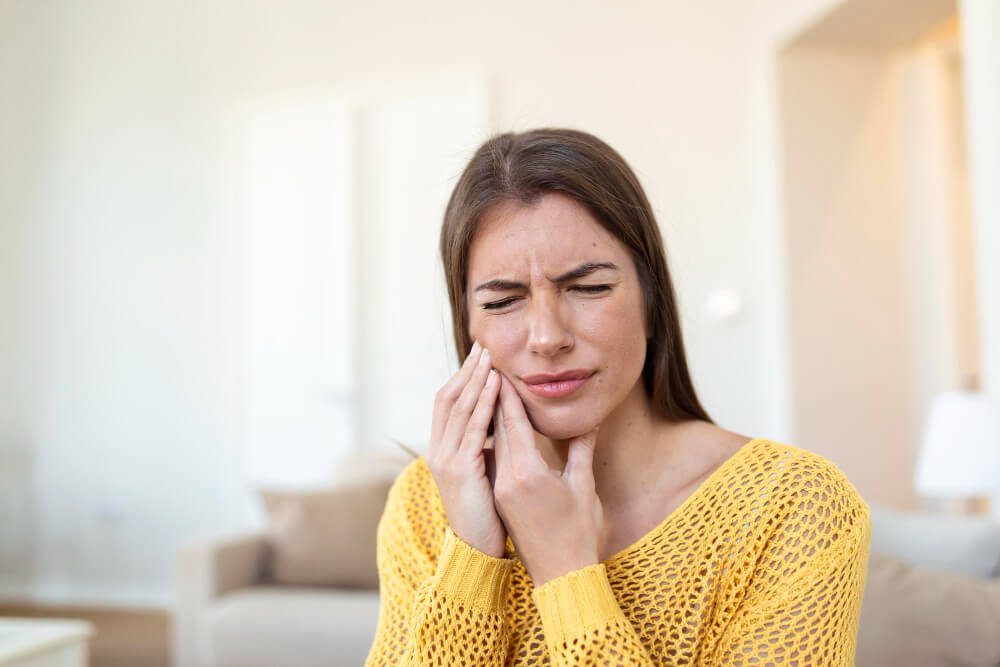What can cause a phlegmon?
A dental phlegmon, also known as a dental abscess, is a collection of pus caused by a bacterial infection that affects the teeth or gums. This infection can occur in different parts of the mouth, but usually originates in the root of a tooth or in the space between the tooth and the gum.
Causes of dental phlegmon:
- Untreated decay: If a cavity progresses and reaches the nerve or pulp of the tooth, bacteria can cause an infection that leads to the formation of an abscess.
- Gum infection: Periodontal diseases, such as gingivitis or periodontitis, can cause bacteria to accumulate in the gums and form a phlegmon.
- Dental trauma: Blows or fractures to the teeth can open a pathway for bacteria to enter the tooth, which can lead to infection.
- Poor oral hygiene habits: Not brushing properly or not flossing can lead to a buildup of plaque and bacteria, facilitating infections.
- Failed dental procedures: In some cases, a dental restoration (such as fillings or crowns) that is not properly performed can allow bacteria to enter.
- Weakened immune system: Conditions such as diabetes or medical treatments that weaken the immune system can increase the risk of dental infections.
Symptoms of a dental phlegmon:
- Intense, throbbing pain in the affected tooth or gum.
- Swelling of the face or mouth.
- Sensitivity to cold or heat.
- Bad taste in the mouth or bad breath.
- Fever in more severe cases.
If you suspect a dental phlegmon, it is essential to see a dentist as soon as possible to prevent the infection from worsening.
How to treat a phlegmon in the mouth
Treatment of a dental phlegmon is essential to eliminate the infection and prevent serious complications. Depending on the severity, treatment may vary, but generally follows these steps:
- The first step is to visit the dentist to evaluate the situation and determine the most appropriate treatment. A dental phlegmon does not heal on its own and requires professional intervention.
- The dentist may need to drain the pus from the abscess to relieve pressure and pain. This can be done by opening a small cut in the inflamed area or through the tooth itself if deeper intervention is necessary.
- Treatment of the infected tooth:
- Root canal treatment (endodontics): If the infection is coming from inside the tooth (pulp or nerve), the dentist may perform a root canal. In this procedure, the inside of the tooth is cleaned, removing the infected tissue and sealing the tooth to prevent future infection.
- Tooth extraction: If the tooth is badly damaged or cannot be saved, the dentist may choose to extract the tooth. This will eliminate the source of the infection.
- Antibiotics: In many cases, the dentist will prescribe antibiotics to fight the bacterial infection. It is important to follow the recommended dosage and length of treatment, even if symptoms improve before the end of the course.
- Pain relief:
- Analgesics: To control pain while treating the infection, the dentist may recommend over-the-counter pain relievers, such as ibuprofen or acetaminophen.
- Salt water rinses: Rinsing with warm water and salt can help reduce inflammation and keep the area clean.
- In addition to treatment at the dental clinic, there are some measures that can help alleviate symptoms while you are waiting for treatment or recovering:
- Maintain good oral hygiene: Gently brush the affected area and floss carefully.
- Avoid hard, hot or cold foods that may irritate the affected area.
- Apply cold compresses to the cheek to reduce swelling.
What NOT to do?
- Do not pop the phlegmon yourself: This can worsen the infection and lead to more serious complications.
- Do not postpone a visit to the dentist: A dental phlegmon is a sign of serious infection and requires immediate attention.
Prevention
- Maintain proper daily oral hygiene.
- Visit the dentist regularly.
- Treat cavities and dental problems early to prevent them from worsening.
If the phlegmon is not properly treated, the infection can spread to other areas, such as the bone or even other parts of the body, which could jeopardize overall health.


